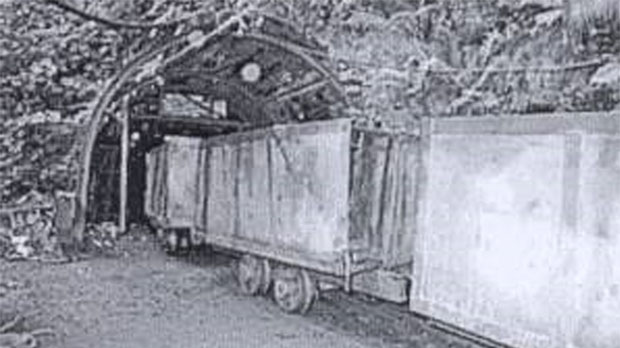Lonely, tough and dangerous: An accident from a lost era
 Alex Thomson
Chief Correspondent
Alex Thomson
Chief Correspondent
Channel 4 News Chief Correspondent Alex Thomson blogs from South Wales on a colliery accident which goes to the heart of Britain’s mining heritage.
It shocks and surprises on many levels. The awful, elemental human loss to water, darkness – possibly gas too, is something which grabs at our deepest fears. Hence, a relatively minor situation in terms of the numbers of people involved, demands the top of the news agenda.
And it’s coal. Coal-mining. The bedrock of the first industrial revolution the world saw.
Our revolution. Our culture.
Supremely so in the valleys of South Wales.

Yet the secondary shock for us is that a drift in a deep, wooded valley is not how it it supposed to look to us – precisely because of our revolution.
No shaft. No wheelhouse. No pithead baths. No rail sidings, generator blocks, slagheaps, pit-village. None of the scenery against which Thatcher, Scargill, McGahey played out perhaps the last great drama of mass industrial politics in these islands.
It looks so, yes, primitive. And it is. The drift: the cheapest, easiest access to win coal in deeply-contoured valley terrain. A world away from the modern super-pit ecology of the Selby coalfield whose deep mineshafts railhead coal across the flat plains of east Yorkshire to the distant, ever-hungry power station turbines of Drax, Ferrybridge and beyond.
Modern. Smooth. Multi-million pound concerns. Mass economics. Mass employment across the landscape of big-scale power generation.
Right now. Above Swansea, it could not be more different.
Niche concern
A hidden drift. Father and son at work in a tiny group of faceworkers. The seam not much more than a couple of feet of quality anthracite. In all, perhaps a couple of hundred tonnes trundling in hoppers from the drift entrance.
A place in-between. Between the vanished vast valleys of coal to the east in the Rhondda. Yet far from the huge opencast concerns and the Selby Field.
A niche concern, dependent upon local spot prices for hard-won coal. A drift that has come and gone, worked and shut down as markets flux and change, owners come and go from the historic leviathon National Coal Board to a current private owner with head office registered to a small house down the road.
It’s how mining began. You see it still in the drifts of north Pennine lead and slate mines – a few still trundling on with their tiny, tough-knit workforces.
You see it to the east in the vanished jet mine drifts in the coastal cliffs and inland moors of North Yorkshire. Here, even now a few gung-ho souls still work the odd drift with a chisel, hard-hat and zero health, safety or inspection concerns – the very locations a secret for winning this semi-precious stone.
Lonely, tough and dangerous
The iron and steel furnaces from Tees to the Tyne were built on – yes – iron ore won largely from drifts, driven below the heather, sheep and curlews of the North York Moors.
All of it long gone – but the drifts still remain, some even yet accessible. But the only shaft mine – Sheriff’s Pit above Rosedale – now a fenced off hole in the moor, hundreds of feet deep. Don’t go there.
Yet down in Wales it is the drifts which have survived. The argument over deep-mine closures is long lost. Today, the only real way down a Welsh deep mine is basically in a heritage museum pit. A fine experience it is too.
Yet the small drifts – these places in between -have somehow clung on. Lonely, tough and dangerous.
And a reminder of how our revolution began.
-
Latest news
-
Boy with profound learning disabilities reaches out of court settlement after abuse in residential school7m

-
India election: Modi rivals hit by string of raids and arrests7m

-
Can UK’s abandoned mines be used to build a greener future?5m

-
Sycamore Gap: Man pleads not guilty to felling iconic tree2m

-
‘Child poverty has not fallen since Tories came in’, says Gordon Brown5m

-




